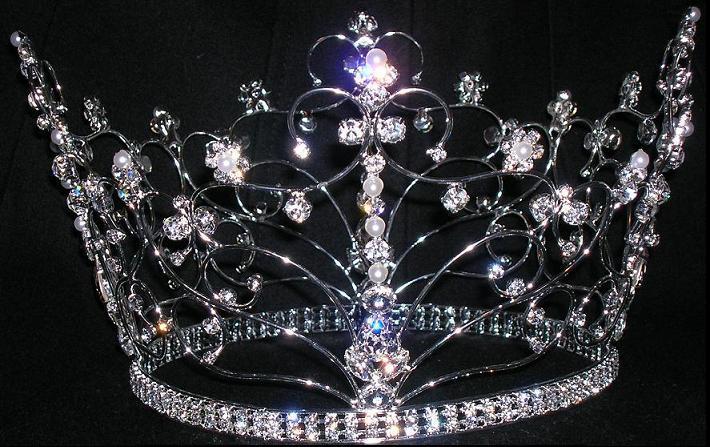
Today, the word “tiara” is often used interchangeably with the word “diadem“, and tiara is often translated to a word similar to diadem in other languages. Both words come from head ornaments worn by ancient men and women to denote high status. As Geoffrey Munn notes, “The word ‘tiara’ is actually Persian in origin — the name first denoted the high-peaked head-dresses of Persian kings, which were encircled by ‘diadems’ (bands of purple and white decoration). Now, it is used to describe almost every form of decorative head ornament.” Ancient Greeks and Romans used gold to make wreath-shaped head ornaments, while the Scythians’ resembled a stiff halo that would serve as the inspiration for later Russian kokoshniks. The use of tiaras and diadems declined along with the decline of the Roman Empire and the rise of Christianity.
1 : a reward of victory or mark of honor; especially : the title representing the championship in a sport
2 : a royal or imperial headdress or cap of sovereignty : diadem
3 : the highest part: such as
a : the topmost part of the skull or head
b : the summit of a mountain
c : the head of foliage of a tree or shrub
d : the part of a hat or other headgear covering the crown of the head
e : the part of a tooth external to the gum or an artificial substitute for this — see tooth illustration
4 : a wreath, band, or circular ornament for the head
5 a : something resembling a wreath or crown
b : the knurled cap on top of a watch stem
6 often capitalized
a (1) : imperial or regal power : sovereignty
(2) : the government under a constitutional monarchy
b : monarch
7 : something that imparts splendor, honor, or finish : culmination
8 a : any of several old gold coins with a crown as part of the device
b : an old usually silver British coin worth five shillings
9 a : koruna
b : krona
c : krone
d : kroon
10 a : the region of a seed plant at which stem and root merge
b : the arching end of the shank of an anchor where the arms join it — see anchor illustration
Ref: Wikipedia, Webster

